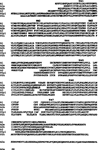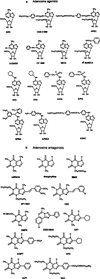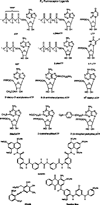Nomenclature and classification of purinoceptors
- PMID: 7938164
- PMCID: PMC4976594
Nomenclature and classification of purinoceptors
Figures




References
-
- Abbracchio M, Burnstock G. Purinoceptors: are there families of P2X and P2Y purinoceptors? Pharmacol. Ther. in press. - PubMed
-
- Barnard EA, Burnstock G, Webb TE. G-protein coupled receptors for ATP and other nucleotides: a new receptor family. Trends Pharmacol. Sci. 1994;15:67–70. - PubMed
-
- Bean BP. Pharmacology and electrophysiology of ATP-activated ion channels. Trends Pharmacol. Sci. 1992;13:87–90. - PubMed
Publication types
MeSH terms
Substances
Grants and funding
LinkOut - more resources
Full Text Sources
Other Literature Sources
Molecular Biology Databases
